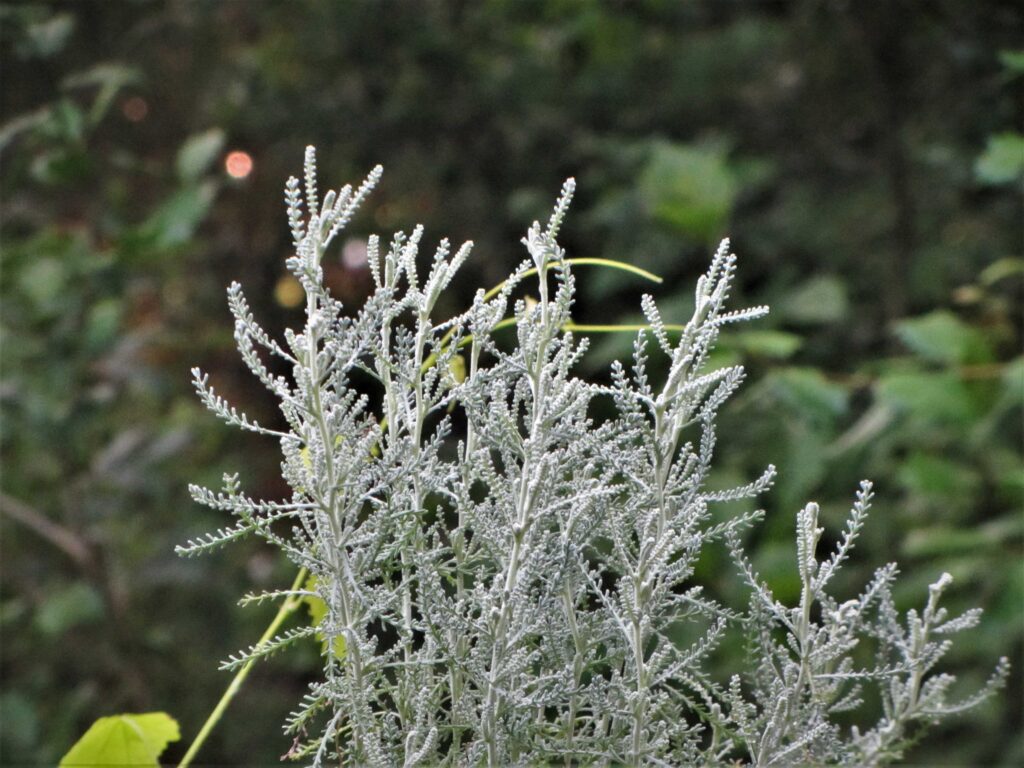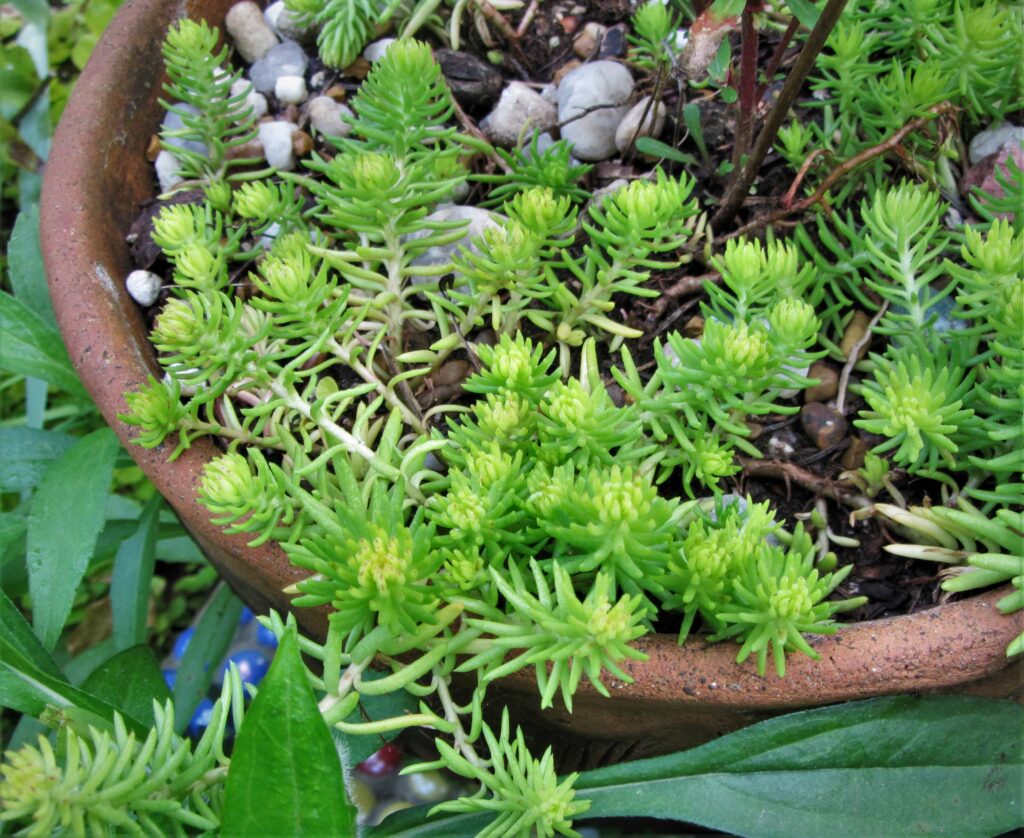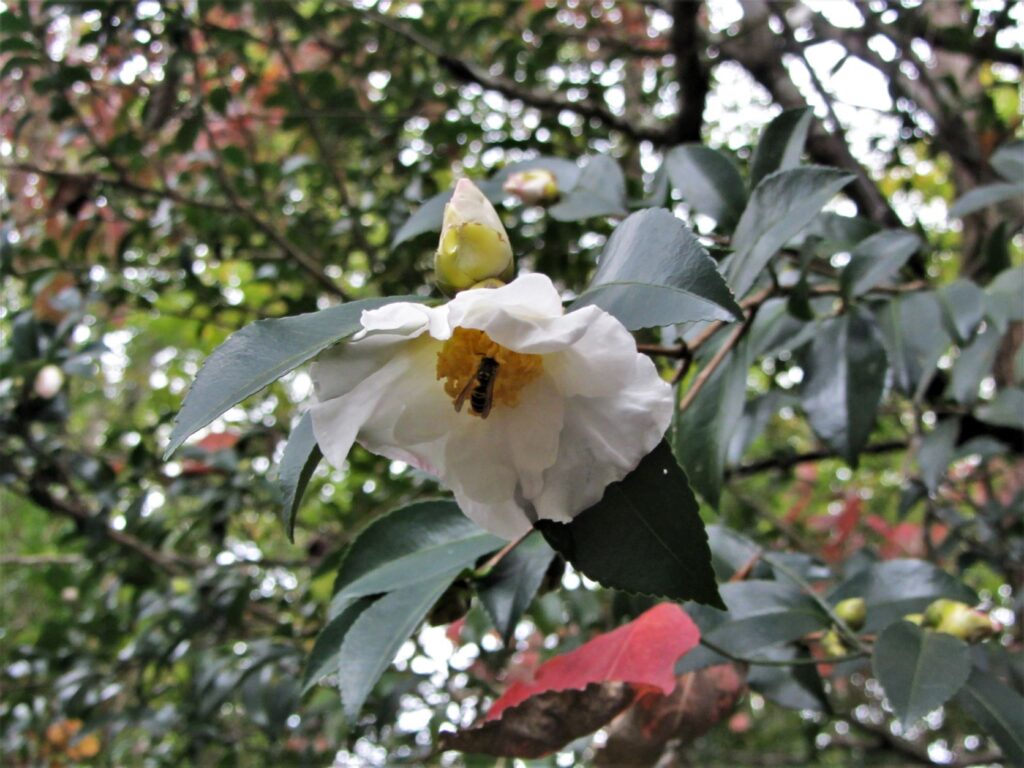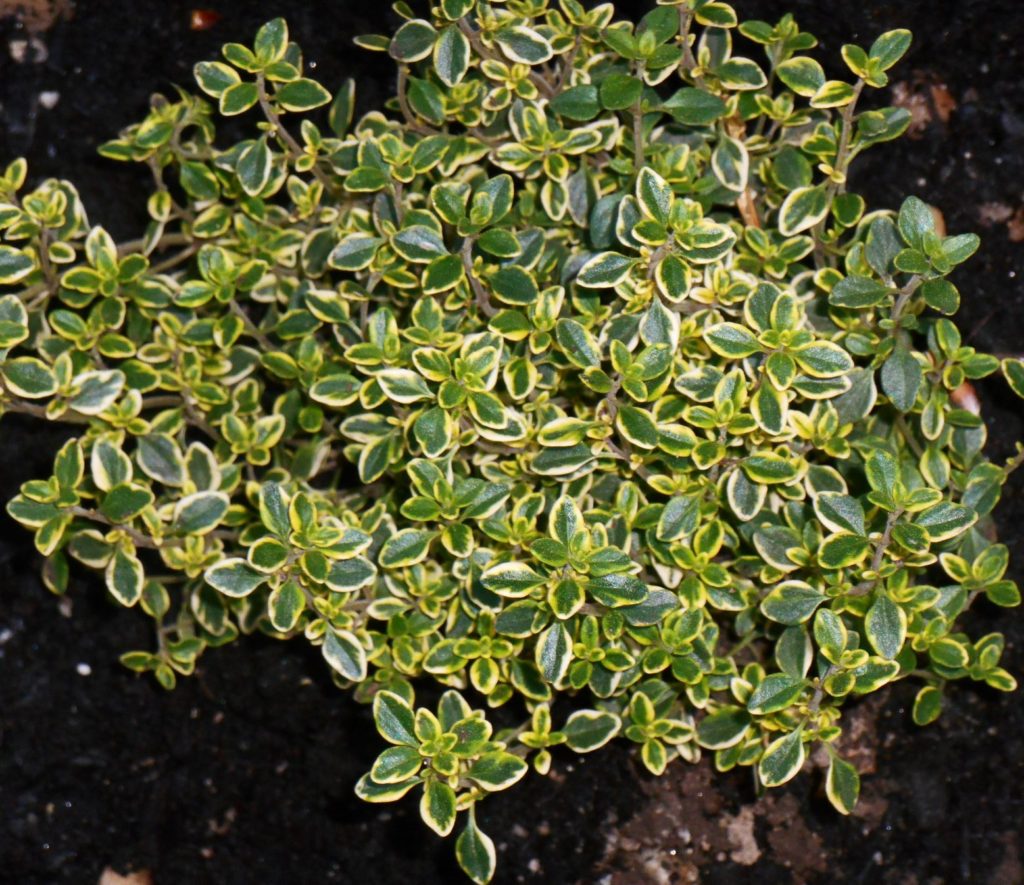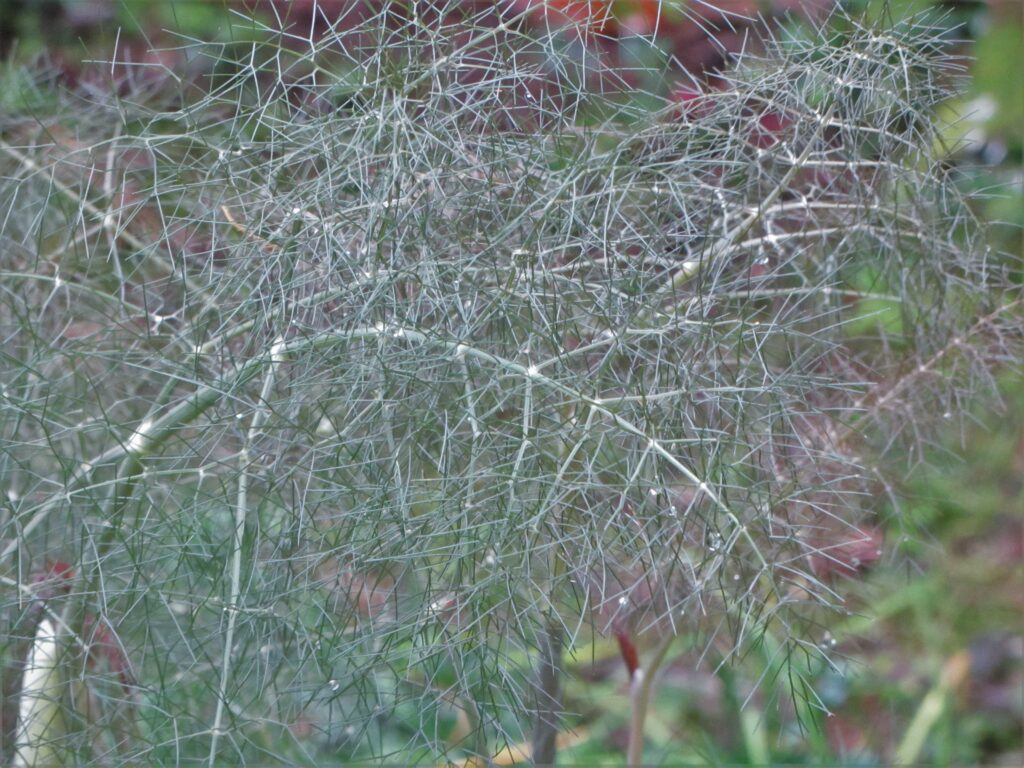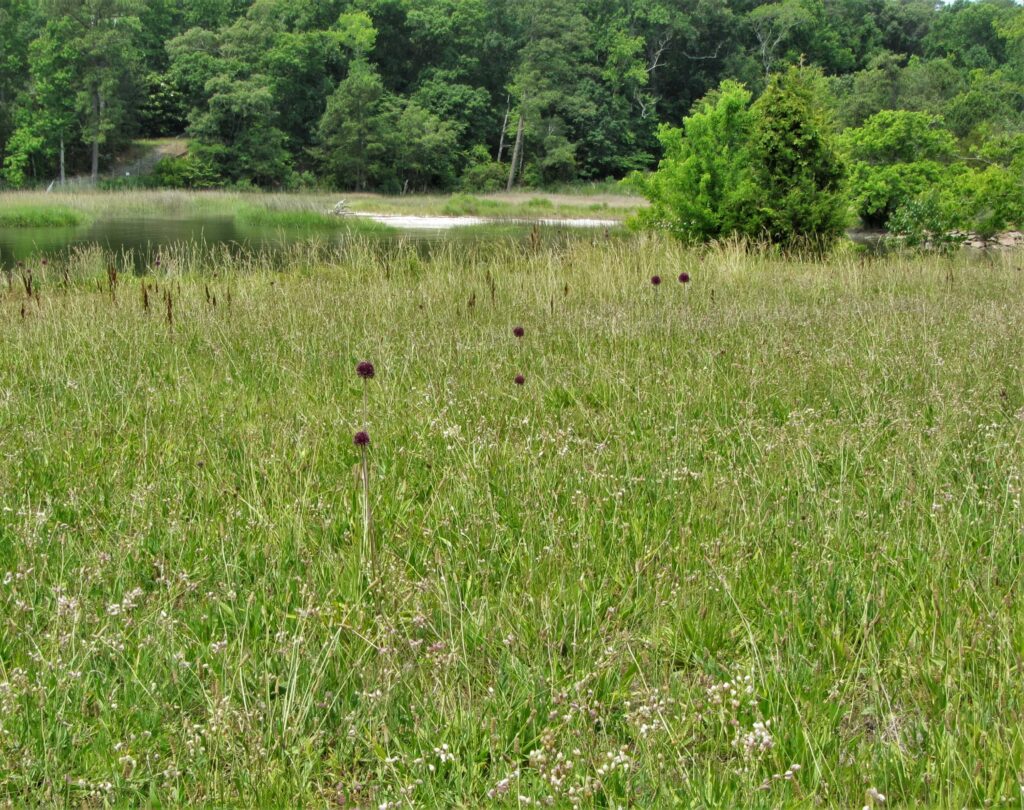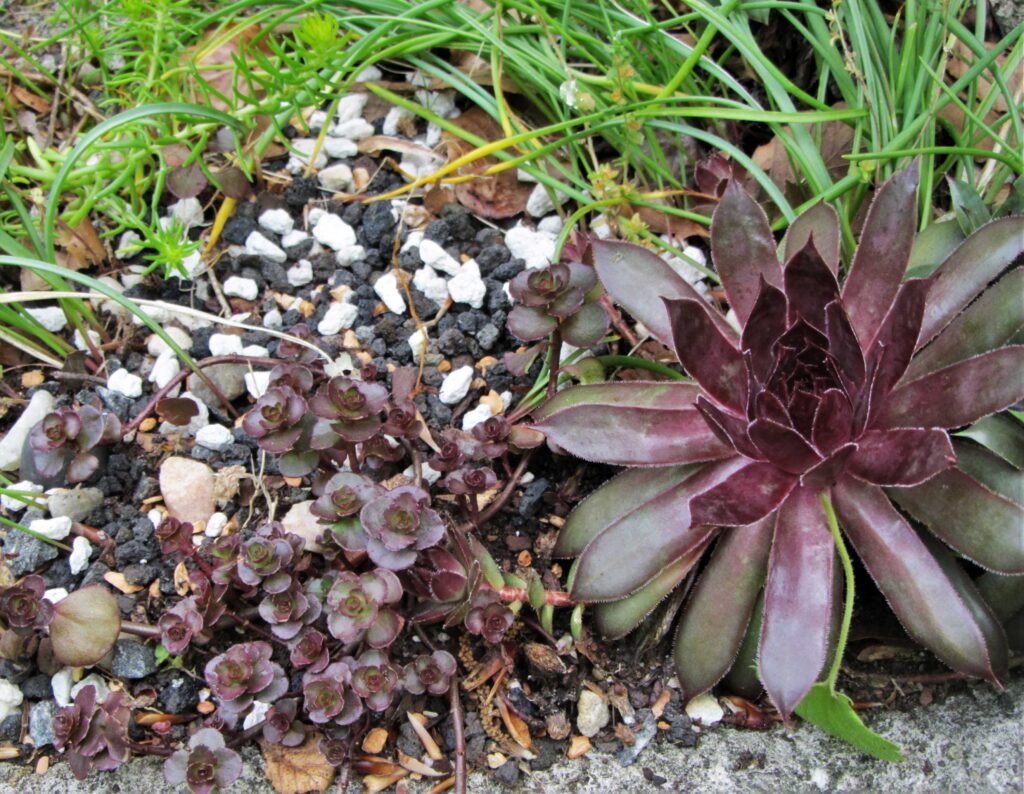Making a Resilient Drought-Tolerant Garden Part I: Right Plant, Right Place
Maybe it will rain, and maybe it won’t. It has been unusually dry in our area for the past several months. Some of the little starts I planted with high hopes in March and April have been struggling to take hold. I need to water large areas of our garden several times a week, as though it were July already. And regular irrigation just isn’t an option for many gardeners.
We are relatively fortunate in coastal Virginia because we have gotten a little rain each month, even if it has been less frequent than usual. When the frequency and amount of rain stays below normal for weeks or months at a time, our garden plants often suffer. Have you noticed how during the hottest, driest times in summer some plants still look lush and healthy while others begin to look dull and shriveled? Many plants are equipped to survive dry spells, and to take full advantage of rain or irrigation when water is available. These are known as drought-tolerant plants.
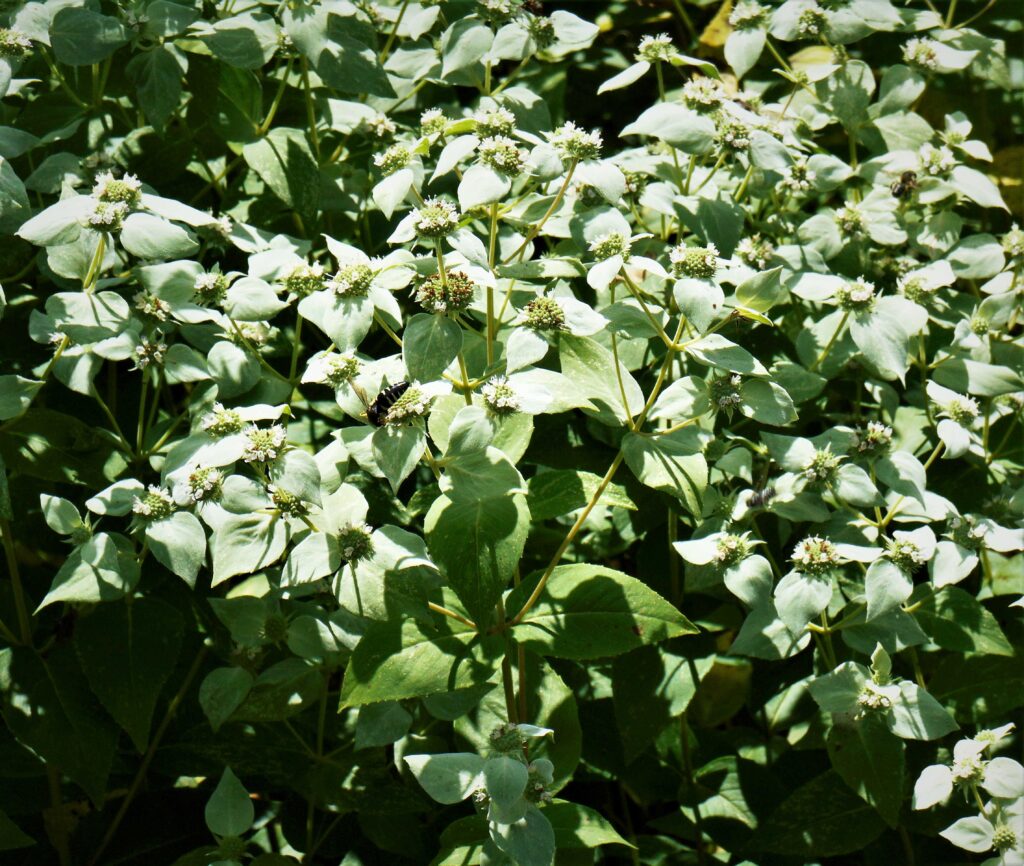
Pycnanthemum incanum, hoary mountain-mint, an Eastern US native member of the mint family, spreads through a network of rhizomes and deep roots.
Designed to Survive
Drought tolerance is a design feature of plants adapted to climates where the weather remains sunny and dry for much of the year. There may be a ‘rainy season’ of a few weeks or months followed by months without measurable rain. Or maybe available moisture remains locked up as ice and is unavailable to roots during long stretches of each year. Sometimes dew falls in the mornings, and plants may have adaptations to collect and use this tiny amount of moisture. Deeper layers of soil usually contain more stored water during dry spells than shallower layers of soil. Most drought tolerant plants have specialized roots, stems, and leaves to help them access and store water. They may also have adaptations to their leaves to minimize water loss through transpiration.
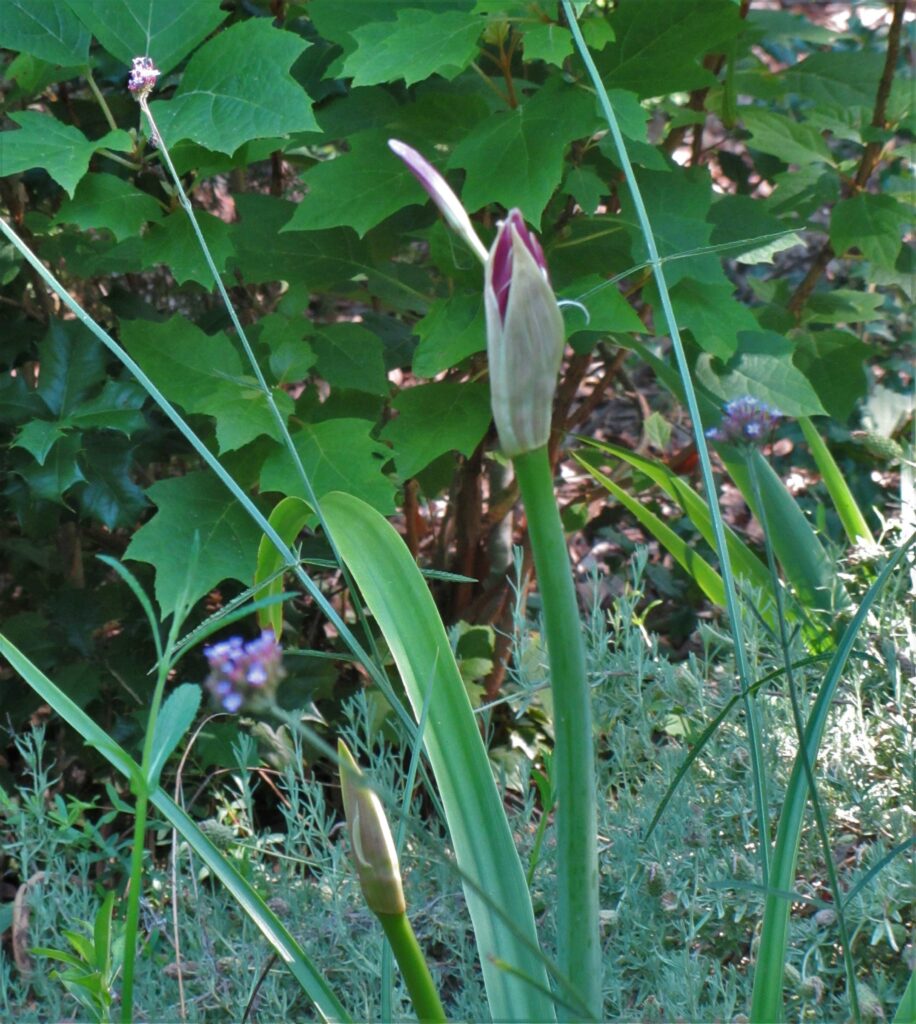
Crinum lilies grow from large bulbs that grow huge networks of roots. They have glossy, narrow leaves and can go fully dormant. Having several adaptations helps a plant survive during severe drought. Lavandula stoechas, behind, has very narrow silvery leaves and woody stems. This part of the garden bakes on hot, summer days.
There are many drought-tolerant plants. There is a whole range of types of drought tolerant plants beyond the spiny cactus that may spring first to mind. Many of these are very beautiful, easy to grow, and support wildlife with their leaves, flowers, fruits, and seeds. Some of them will also gracefully tolerate an inundation of rain when it finally comes. But their adaptations help them survive when hot sunny days draw every drop of moisture out of their less prepared garden neighbors. Within a genus, some species, or even varieties with a species, or hybrids, may be more drought-tolerant than others. Look for those varieties that have adaptations that enable them to survive periods of drought.
General Characteristics of Drought-Tolerant Plants
There are several general characteristics of drought tolerant plants. Knowing which features to look for helps us to evaluate a plant without having to memorize a list or look up the tolerance of each promising plant. One or more of these features allows a plant to survive exceptionally dry weather: a tap root or deep root system; silver or grey foliage; fuzzy or velvety foliage; succulent stems or leaves; waxy coatings on leaves, leathery leaves; and very small or narrow leaves.

German bearded Iris grow from fleshy rhizomes. Like other geophytes, the plants can survive without roots or leaves for short periods of time while they are dormant.
Geophytes
Another adaptation is an underground storage structure like a rhizome, bulb, corm, or tuber, which allows the plant to dry out completely and still survive. These plants are called ‘geophytes.’ They generally grow and bloom during a limited time each year and then die back for a period of dormancy. They come to life when available warmth and moisture permit, produce flowers and seeds quickly, and then they go dormant again when conditions change. These plants may be cold hardy or tender perennials, but they can survive year to year and may be sold when completely dormant. Daffodils and many lilies are an example of these types of plants. But so are potatoes, yams, onions and taro.
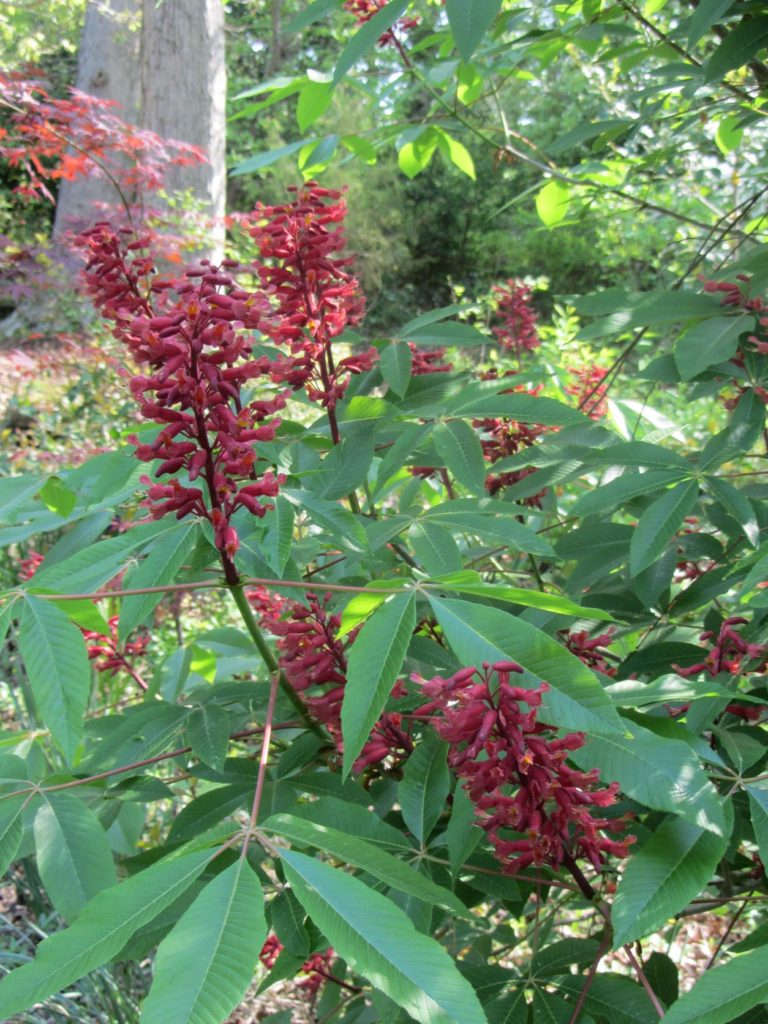
Scarlet Buckeye blooms in April, attracting hummingbirds and other pollinators. There are several species in the genus Aesculus, and some are known for dropping their leaves during dry weather. Many buckeye trees drop their leaves before other tree species in early fall.
Woody Plants
Some woody plants will drop their leaves during dry spells, and then grow new leaves when there is enough moisture in the soil to support them once again. The Western buckeye tree A. californica, often drops its leaves in mid-summer during drought. A woody plant’s roots, trunk, branches and twigs can often survive a dry spell in nearly dormant state, waiting for the rains to return. All woody plants develop extensive root systems to find available water, and can store water in their tissue for later use.
Clues to Identify Drought-Tolerant Plants
Let’s look at the characteristics of drought-tolerant plants in more detail. A plant having a combination of these traits is even better equipped to survive dry weather.

Native Baptisia ssp. grow from a very long taproot. They are an important host and nectar plant in our area. A member of the same family as garden peas, these flowering perennials can transform nitrogen from the air into a nitrogen compound available for use by plants, stored in nodules on their roots. Plants growing nearby can use this nitrogen for their own growth.
A taproot or deep root system
A large, straight central root is called a taproot. Dicotyledon plants, or those whose seeds have twin halves, like a bean, all begin life with a taproot. Some maintain a dominant taproot as they mature; while others eventually form more fibrous root systems, with a network of smaller roots where no one root is significantly thicker or deeper than the others. A taproot may serve as a storage organ to store water and carbohydrates so a plant can survive dry weather.
Deep roots also absorb water and minerals from deeper layers of soil that may retain moisture, even during drought. A very deep and wide root system, like the root system of many native grasses and prairie plants, allows the plant to seek out water deep underground and to absorb water from an area much broader than the visible stems and leaves of the plant.
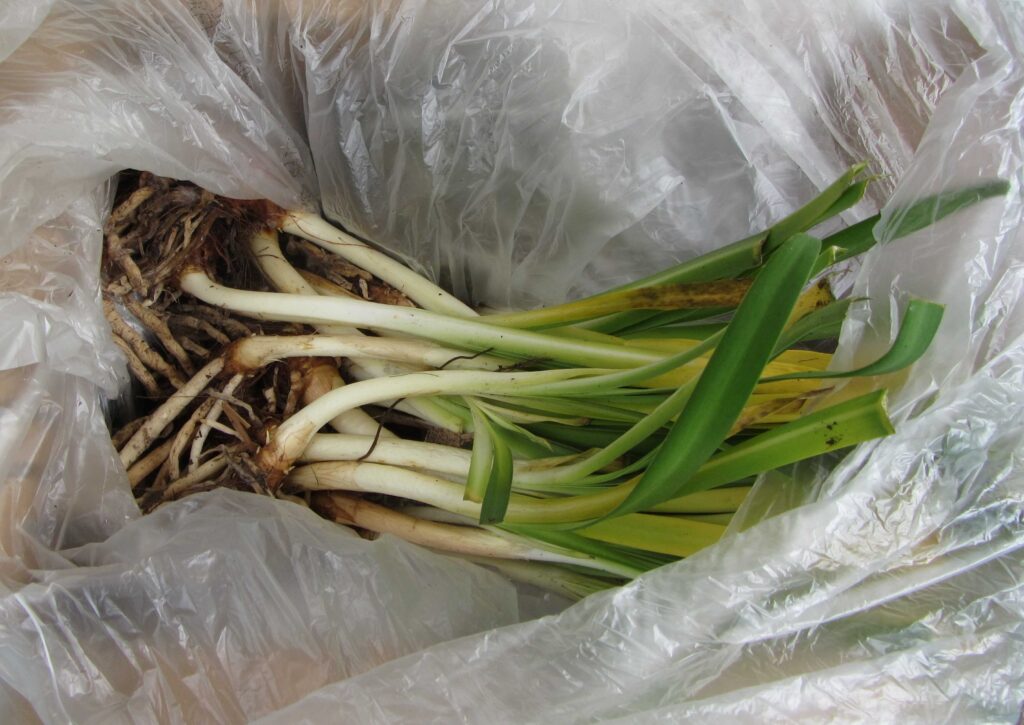
Agapanthus, Lily of the Nile, have thick, fleshy roots. While not taproots, they help the plant survive drought.
Examples of plants with taproots include: Carrots and horseradish, fennel, dandelion, sagebrush, Asclepias ssp. or milkweeds, Yucca ssp., Baptisia ssp. or false indigo, Verbascum ssp.; grasses like river oats, Carex ssp. and Panicum ssp.; and many trees such as oaks, American beech, and pines

Salvia yangii is the new botanical name for Russian sage, formerly known as Perovskia. Its tiny, silvery leaves give it exceptional drought tolerance, and it prefers arid conditions. This new start will eventually grow to perhaps 4′ tall and wide at maturity.
Silver, white, or grey foliage
Plants with light, reflective foliage can stay cooler and reduce their rate of evaporation by reflecting much of the sunlight that hits them. Many plants with silver, grey or white leaves also have fuzzy, textured leaves to further slow evaporation. Some have thick, succulent leaves, or very narrow small leaves. All of these traits allow the plant to carry on photosynthesis while minimizing how much water evaporates through their leaves.
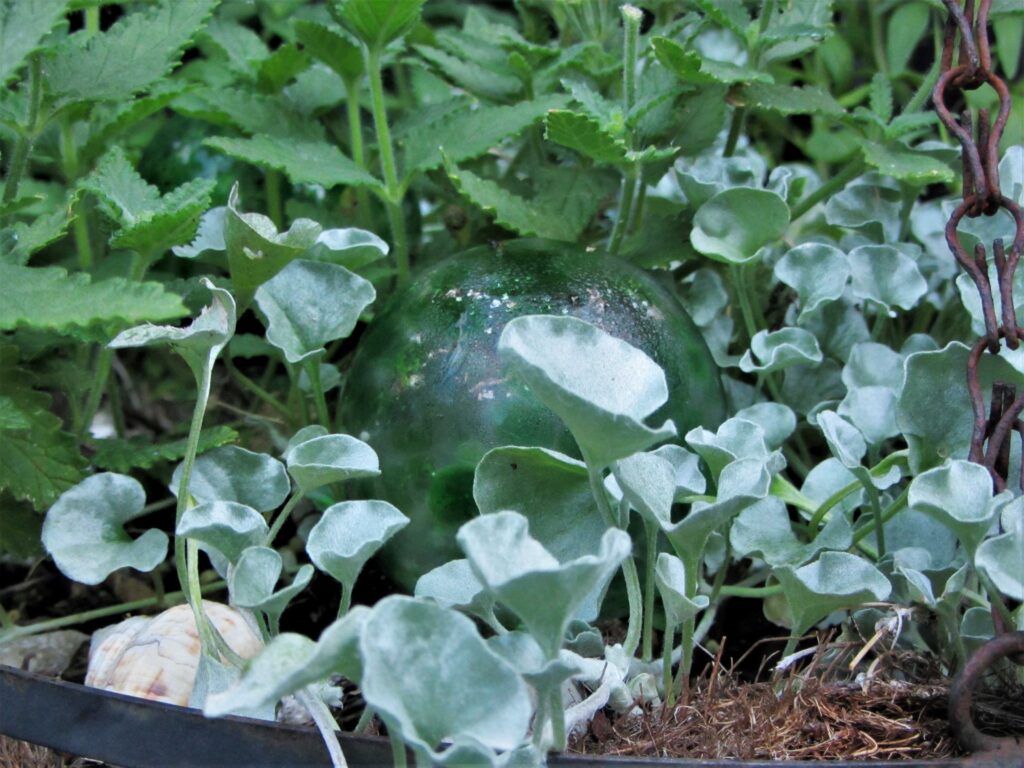
Dichondra argentea ‘Silver Falls’ performs well in hanging baskets and containers. It grows roots wherever a node touches soil, to take full advantage of any available moisture. Watering globes deliver water to the roots and prevent water from running off of dry soil.
Examples of plants with light colored leaves include: Dichondra argentea, Stachys byzantina or lamb’s-ears, many Salvia ssp. including Russian sage, Senecio candicans or dusty miller, S. crassissimus, Lavandula ssp. or lavender, Nepata ssp. or catmint, Santolina etrusca, Artemesia ssp. and Pycnanthemum ssp. or mountain mint.
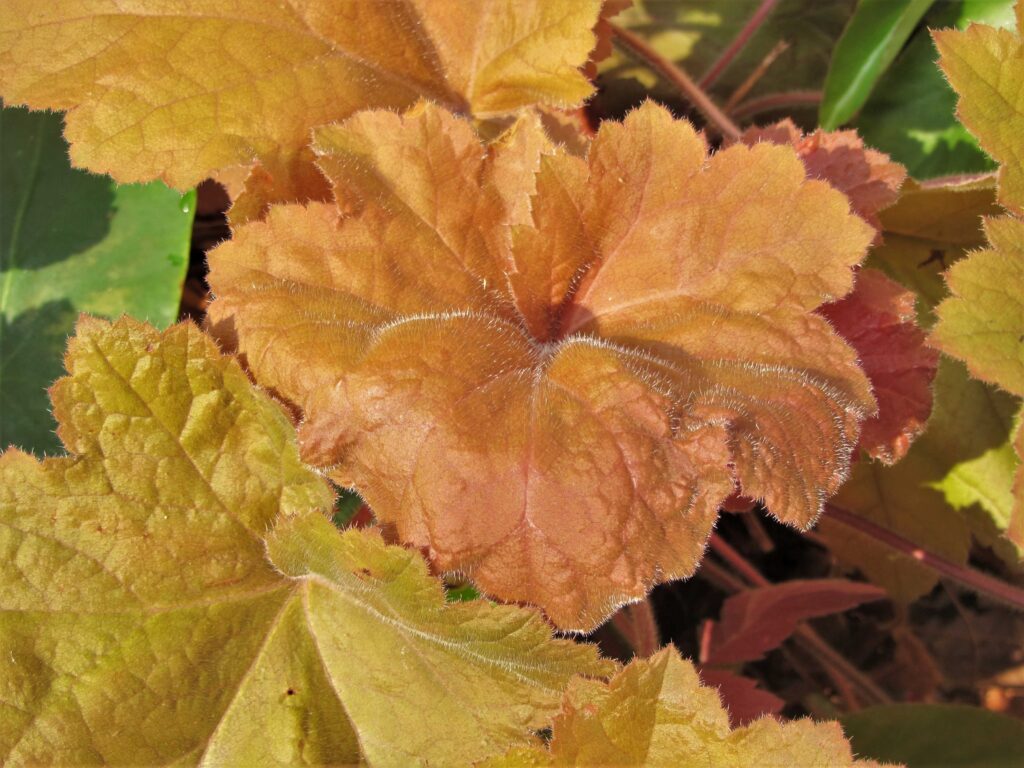
Native Heuchera have tiny hairs on their leaves which reduce air-flow across the leaf surface and slow evaporation.
Fuzzy or velvety foliage
Textured leaves that feel velvety or fuzzy are covered in tiny hairs which help trap humidity near the leaf surface, slowing evaporation of water from the leaf. These tiny hairs also slow the movement of air across the leaf and provide a little shade for the surface of the leaf. Both the top and bottom surfaces of the leaf can be fuzzy. Deer and rabbits rarely graze plants with velvety textured leaves.
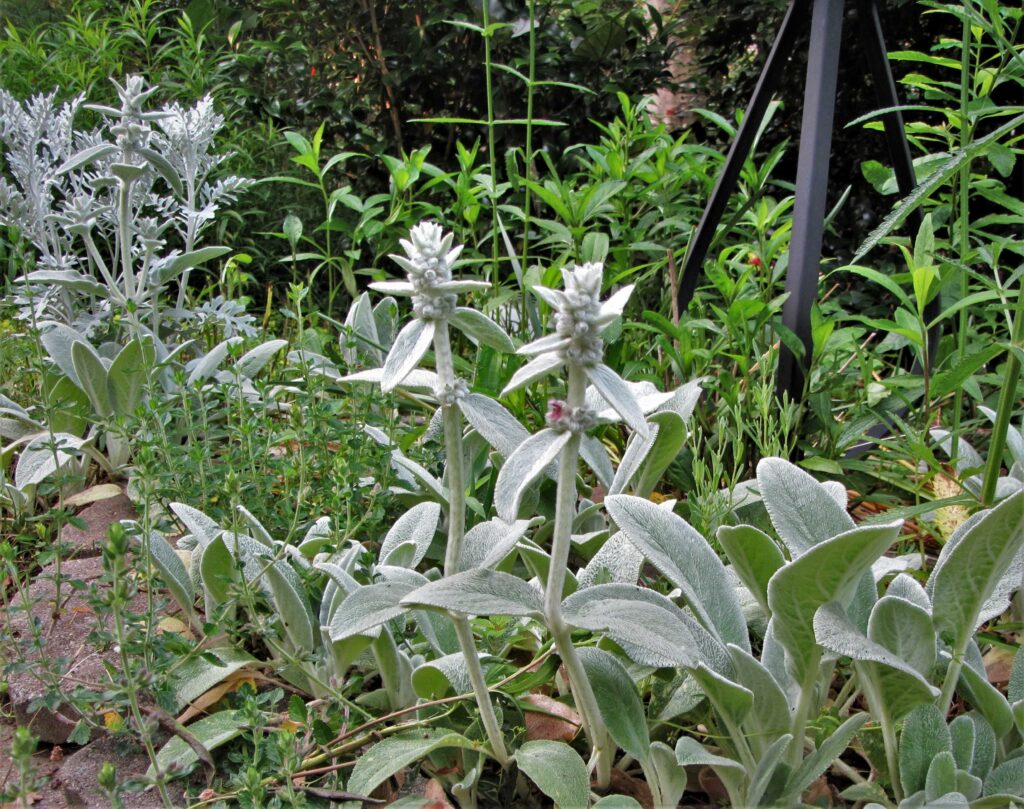
Stachys byzantina has velvety, silver leaves and is very drought tolerant. Foliage dies back to the ground if the plant gets too much water, but it will reappear when conditions permit. It grows here with thyme, lavender, Senecio, Verbena, and Rudbeckia in early June. Spring blooming bulbs have already died back for the season.
Examples of plants with fuzzy or velvety leaves include: Stachys byzantina or lamb’s-ears, Senecio cineraria or Dusty Miller, Helichrysum petiolare or licorice plant, Verbascum ssp., Heuchera ssp.
Succulent stems or leaves
Succulents have the ability to store water in their plump, often gel-filled leaves and stems. Succulents may also store water in plump, fleshy roots, including taproots. Some geophytes may be considered succulents because water is stored in their rhizome or tuber. Many succulents also have a shiny, waxy coating on their stem and leaf surfaces to further slow evaporation. Within a genus, some species may be succulent while others are not.

Opuntia ssp., or prickly pear cactus, are native in our area. This selection grows without the sharp thorns normally found on cactus. The leaves and fruit are edible.
Examples of succulent plants include: Aloe ssp., Delosperma ssp. or hardy ice plant, Echeveria ssp., Agave ssp. Portulaca ssp., Sempervivum tectorum or hens and chicks, Yucca ssp., Opuntia ssp.

Magnolia grandiflora leaves have a leathery texture with a waxy coating on the top of the leaf and fine velvety hairs on the underside. This is an extremely drought tolerant tree.
Waxy coatings on leaves
Glossy, shiny leaves and stems may be covered in a thick waxy cuticle that protects the leaf. The waxy material, called cutin, helps reduce moisture loss from the plant tissue. Cutin may also have insecticidal properties in some species. This shiny surface also reflects light, reducing the amount of light entering the leaf cells in much the same way that silvery pigments in a leaf help reflect light.

Some Begonia hybrids, like this white flowering Dragon Wing Begonia, have very waxy leaves and can be grown in part to full sun. Begonia rex, (rear) often have light, silvery markings on their leaves and grow from fleshy rhizomes. Most Begonias prefer for the soil to partially dry out between waterings.
Examples of plants with waxy coatings on their leaves include: Magnolia grandiflora, Ilex ssp., Camellia ssp. Crassula ssp. and many other succulents, Echeveria ssp., Acanthus mollis, Podophyllum ssp., Hosta ssp., Alocosia ssp., Arum ssp., Polystichum ssp. such as Christmas ferns, and Cyrtomium ssp., or holly ferns.

Holly fern has leathery, evergreen leaves. Clumps expand, but don’t spread. It develops a very large root system and is extremely drought tolerant.
Leathery leaves
Leathery leaves have a thick, tough cuticle to reduce water loss and to protect the cellular tissue of the leaf. Leathery leaves may also be glossy, with a coating of cutin on their cuticle.
Examples of leathery leaves include many of the plants listed above, particularly hollies, Magnolia ssp., Christmas and holly ferns, Camellia, Helleborus ssp., and many Aroids like Alocasia and Arum.
Very small or narrow leaves
Small leaves lose less moisture on hot, sunny, and windy days than do large leaves. Many, small leaves help a plant retain more water because there is less surface area for evaporation.
Plants with small or narrow leaves include: Thyme, fennel and dill, Salvia ssp. including rosemary and Russian sage, Santolina etrusca, Achillea ssp. or yarrow, and most grasses, which have narrow blades.
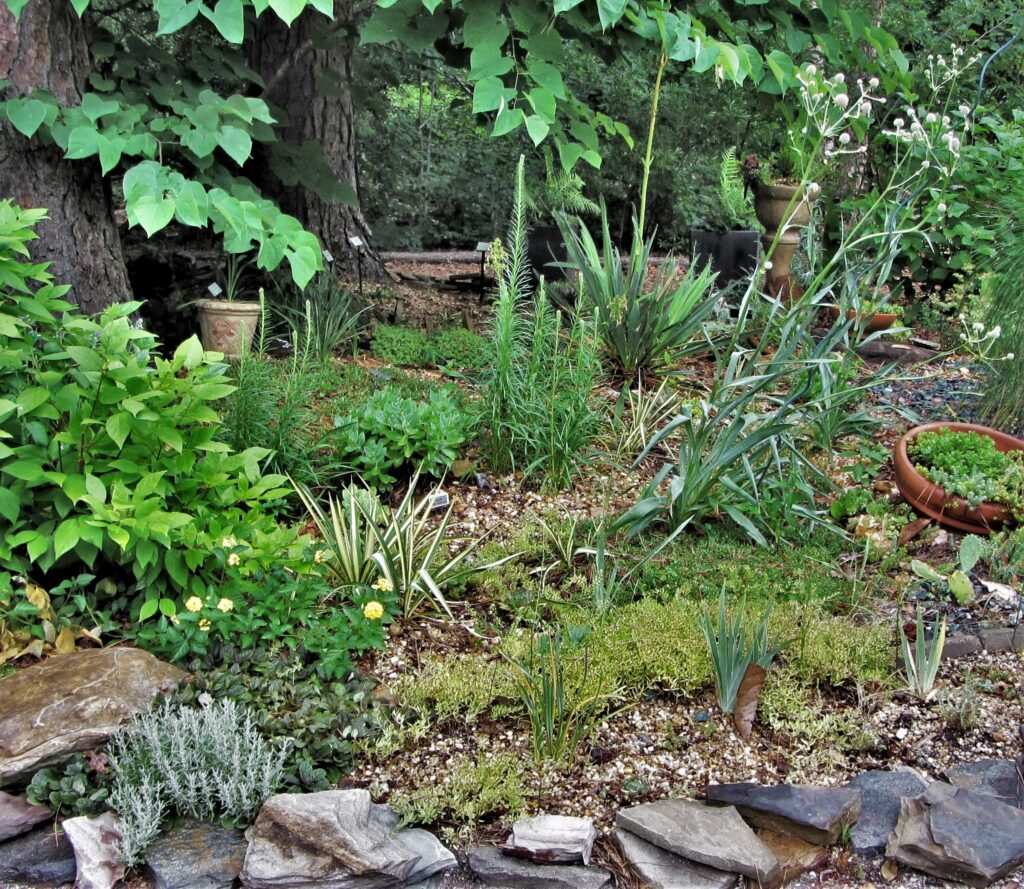
The rock garden at the Williamsburg Botanical Garden and Freedom Park Arboretum holds a variety of drought tolerant plants, including rattlesnake master, Eryngium yuccifolium (right) and several varieties of Yucca.
Planting drought tolerant plants greatly reduces the need to irrigate to keep a garden looking good through dry spells. Larger groups of several individual plants grouped together makes caring for them easier, and they can support one another.
There are a variety of design strategies and planting techniques to assist plants in making the most of available moisture. We will discuss a few of these that are practical for home gardeners in the Part II of “Making a Resilient Drought-Tolerant Garden”.
All Photos by E. L. McCoy
For More Information:
Bainbridge, David A. Gardening with Less Water; Low-Tech, Low-Cost, Techniques; Use Up to 90% Less Water in Your Garden. Storey Publishing. 2015.
Chalker-Scott, Linda. The Informed Gardener. University of Washington Press. 2008.
Ogden, Lauren Springer and Scott Ogden. Waterwise Plants for Sustainable Gardens: 200 Drought-Tolerant Choices for All Climates. Timber Press. 2011.
Sherry, Danielle. (2023 July-August). Water-Wise Design Ideas. Fine Gardening Magazine. pg. 65-72.

